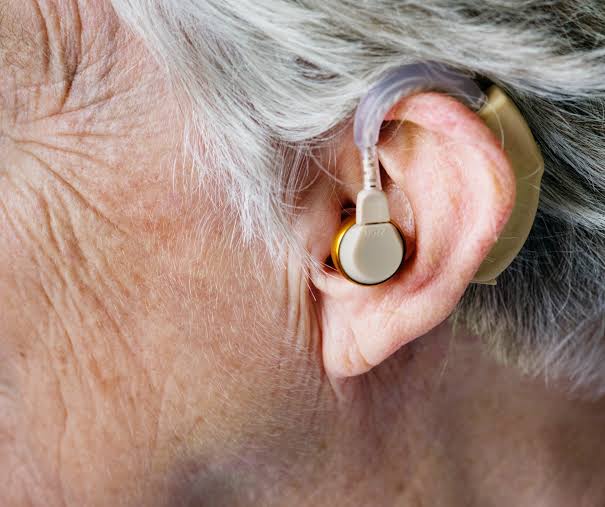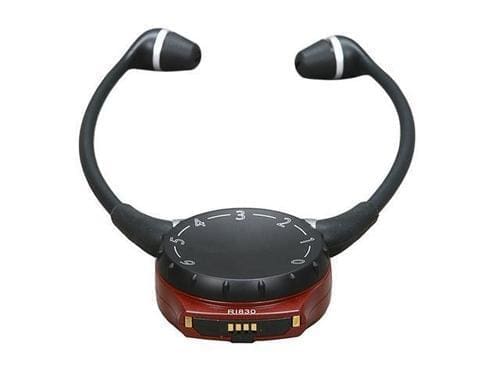
Most hearing loss that is caused by nerve damage can be treated by an audiologist with hearing aids, assistive listening devices, and hearing rehabilitation. You can find a reliable and expert audiologist in New York at Audio Help Hearing Centers.
1. Hearing Aids
There are dozens of kinds of hearing aids; they can be worn behind the ear, in the ear, or on the body, or they can be incorporated into eyeglass frames.

Can be worn in one ear (monaural) or both ears (binaural)
Picks up sound, magnifies its energy, and delivers this louder sound to the user’s middle ear.
Hearing aids make sounds louder, but not necessarily clearer.
Children who hear sounds with distortion (alteration) will still experience distortion with hearing aid.
Even the most powerful hearing aids generally cannot enable children with severe and profound hearing losses to hear speech sounds beyond a distance of a few feet.
In all cases, the wearer of the hearing aid, not the aid itself, does most of the work in interpreting conversation.
The earlier the child can be fitted with an appropriate hearing aid, the more effectively he will learn to use hearing for communication and awareness.
To derive the maximum benefit from a hearing aid, a child should wear it throughout the day. Residual hearing cannot be effectively developed if the aid is removed or turned off outside the classroom.
Hearing aids offer minimal benefit in noisy and “echoing” classrooms.
2. Assistive Listening Devices

Group assistive listening devices can solve the problems caused by distance, noise, and “echo” in the classroom.
A radio link is established between the teacher and the children with hearing loss, with the teacher wearing a small microphone transmitter (near the lips) and each child wearing a receiver that doubles as a personal hearing aid.
An FM radio frequency is usually employed, and wires are not required, so teacher and students can move freely around the classroom. The teacher does not have to be 6 inches away from the child’s ear at all times.
3. Cochlear Implants

Cochlear implant bypasses damaged hair cells and stimulates the auditory nerve directly.
Four basic parts:
- External microphone – picks up sound from the environment
- External speech processor – selects and arranges sounds picked up by the microphone
- Transmitter and receiver/stimulator – receives signals from the speech processor and converts them into electrical impulses
- Electrode – collect the impulses from the stimulator and send them directly to the brain via the auditory nerve
Does not restore or create normal hearing. However, it gives a deaf person a useful auditory understanding of the environment and helps him or her to understand speech.
When coupled with intensive post-implantation therapy, cochlear implant can help young children acquire speech, language, developmental, and social skills.
Those with cochlear implant have significant improvements in speech perceptions, speech production, and language skills compared to peers without cochlear implants.
Earlier implantation seems to yield better outcomes. Ontario Hearing Centers, can provide some great hearing aids for your needs.
Issues Surrounding The Cochlear Implant:
- The cost may be prohibitive for many individuals ($30,000)
- Extensive auditory training therapy is required, especially for the very young.
- Attitude of the individual may be a determining factor.
Advantages Of The Cochlear Implant:
- Can restore a lot of residual hearing to help the individual communicate more effectively.
- Can enhance the language development of young children.
- Can enable the individual to function more independently in life.
- Can make a major impact of the child’s educational placement.
Supports and Technologies that Supplement or Replace Sound
1. Interpreters
An interpreter signs the speech of a teacher or other speaker for a person who is deaf.
The role of the educational interpreter (also called as educational transliterator) made it possible for many students with hearing loss to enroll in and successfully complete postsecondary programs.
The duties of a school interpreter may include:
Ø Tutoring
Ø Assisting regular and special education teachers
Ø Keeping records
Ø Supervising students with hearing loss
2. Speech-to-Text Translation
This technology is used to increase deaf students’ access during live presentations, such as public or classroom lectures.
This technology is known as the computer-aided speech-to-text translation.
A trained “captionist” types the teacher’s lecture and other students’ comments into a laptop computer using a shorthand code. Special software translates the code (e.g. typing “kfe” produces “coffee”), and the text is instantly displayed on a screen or a student’s personal laptop computer monitor.
This is not done “word to word”…but the translation is kept as close as possible to the original.
This technology allows students to keep a hard copy of the lecture. They can also print the hard copy for study as notes.
3. Television Captioning
Captioned TV programs – printed text appears at the bottom of the TV screen, similar to watching a film with subtitles.
Research found that deaf students comprehended more of scripts (captions) that were accompanied by video that they did by reading the scripts alone. Visual stimuli provide essential information deaf viewers can use to improve their comprehension. This can also advance and enhance their reading skills.
4. Text Telephones
Sending immediate messages over conventional telephone lines in “typed” or “digital” form.
Text Telephones (TT) enable the user to send message over telephone lines to anyone else who has a TT.
5. Alerting Devices
Special devices to alert the deaf to certain sounds or events in the environment. Sound-sensitive switch being attached to…
Ø A flashing light
Ø A vibrator
Also the use of “hearing-ear dogs”…that alert a deaf person to important sounds in the environment.

Be the first to comment